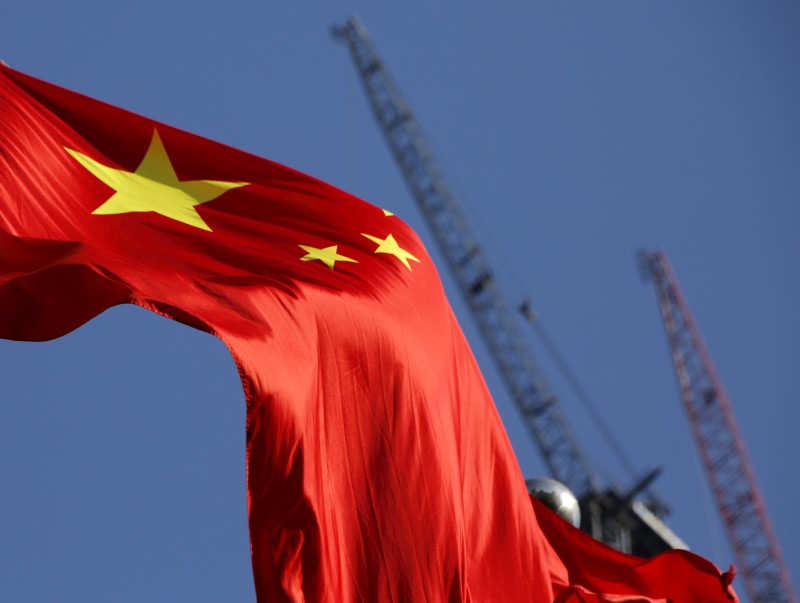These are top 10 stocks traded on the Robinhood UK platform in July
(Bloomberg) --
When Chinese Premier Li Keqiang delivers his annual report on economic policy this Friday, there’s a chance that the document’s most important number will be missing.
The target for gross domestic product growth is usually the anchor for the nation’s system of policy making, but the coronavirus crisis this year has led to such great uncertainty that officials have considered abandoning it altogether.
If the leadership does decide to publish a numerical target at the National People’s Congress as in previous years, it has faced the dilemma of where to set it: Too high a number risks binding officials to costly stimulus and higher debt. Too low a number makes plain that the government won’t meet its own objective of doubling the size of the economy this decade.
“This year, if a target is adopted, it may look more like a forecast than a task to be accomplished at any cost,” said Ding Shuang, chief economist of Greater China & North Asia at Standard Chartered (OTC:SCBFF) Bank in Hong Kong, forecasting the goal will be kept flexible at around 2% to 3%. “A more flexible GDP target suggests wider deviations from the number would be allowed if justified by domestic or external shocks.”
The coronavirus pandemic and the ensuing lockdown measures have paralyzed the economy as well as its conventional political schedule, with the annual session of the NPC about two months late. With 2020 almost half way through, the leadership has said little about the economic targets to guide market expectations and help ministries and provinces make their own plans.
The consensus forecast for economic growth this year is just 1.8%. The shutdowns in the first quarter are easing only gradually, global demand is likely to remain depressed and the nation still faces the risk of a second wave of infections.
Although China’s $14 trillion economy has moved toward being market-led in recent years, much still depends on a Soviet-style system of planned quotas and targets. 2020 is the final year of the current Five Year Plan. Government spending and investment objectives, both usually included in Li’s annual Work Report, by nature depend on a top-line growth number as a guide. Ministries and local officials take their cue from the GDP goal, and projects on everything from infrastructure spending to poverty alleviation would reference it.
The government has blurred the annual growth target before, though in different circumstances. In 2001, just before the nation joined the World Trade Organization and was setting off on a decade of break-neck growth, then-premier Zhu Rongji referenced an average target of 7% over the span of the 10th Five Year Plan -- a goal that was ultimately exceeded.
Dropping the target entirely now may cause disorientation and inconsistency in policy execution, a reason some economists have argued that it will appear in some form.
“Even if they don’t announce one publicly, they’ll still have an implicit one to guide policy making,” said Larry Hu, head of China Economics at Macquarie Securities in Hong Kong.
By setting an explicit number at a time when the recovery is fragile and more headwinds are coming, policy makers are risking their credibility. If export demand doesn’t improve, domestic sentiment worsens or another virus outbreak hits, the government will find itself tied to the obligation and being forced to resort to excessive stimulus. That’s an outcome that the government has strenuously tried to avoid throughout the U.S.-China trade war and the economy’s long structural slowdown.
A scenario forecast by JPMorgan (NYSE:JPM) economists is to not announce a numeric growth target, while focusing instead on economic and social stability issues, such as employment, food and energy security and supply chain stability.
“This is a realistic choice given that the economy still faces major internal and external uncertainties,” Haibin Zhu and other economists from the bank wrote in a note. “If the government continues to announce a numeric growth target, it runs the risk of either the target being too high or too low.”
Officials have already moved away from hard adherence to a numerical target in recent years, emphasizing more job creation, shifting to a range rather than a point target, and scrapping a numeric goal for money supply growth.
The function GDP targets traditionally play in the planning of the whole government apparatus “cannot indefinitely be a reason to continue setting growth targets,” said Louis Kuijs, head of Asia economics at Oxford Economics Ltd in Hong Kong. “At some point China will need to reform policy coordination between different parts and layers of the government.”
©2020 Bloomberg L.P.
